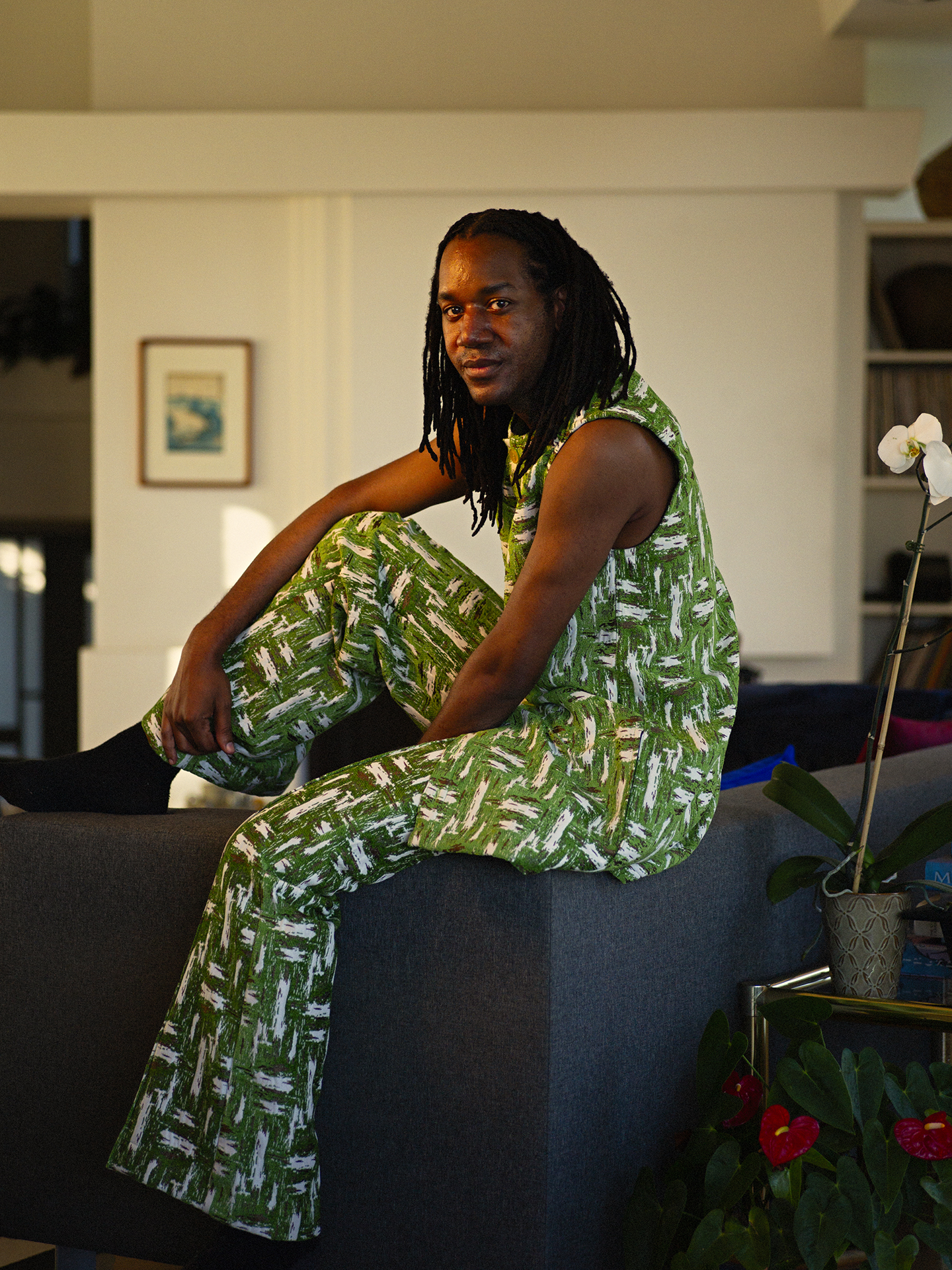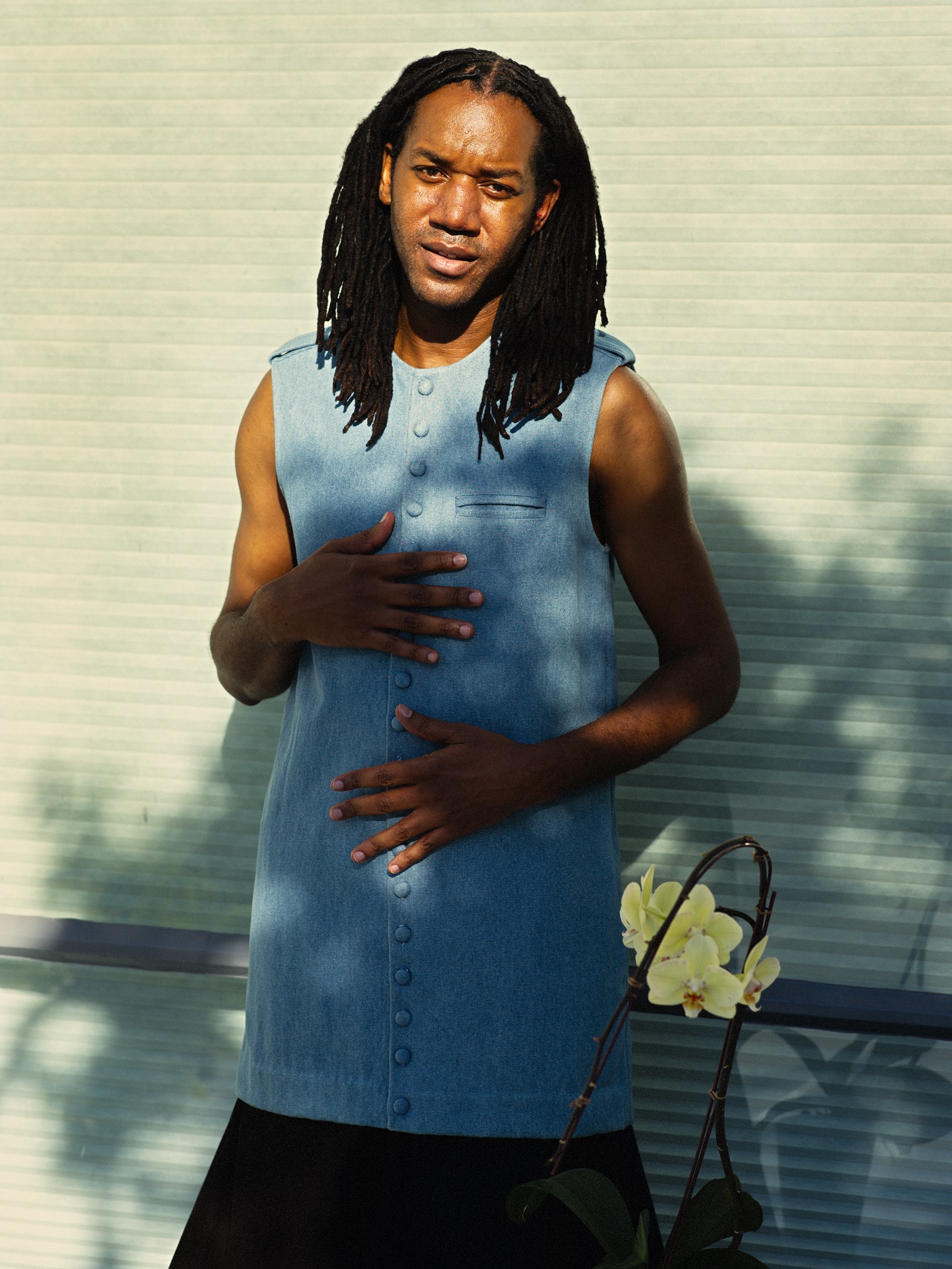Text by Eunica Escalante
Images by Sam Muller
Kenneth Nicholson has a penchant for romanticizing life’s minutiae. Whether it’s the mismatched patterns of his grandmother’s living room, as referenced in his fall 2020 collection “From Grandma’s Couch,” or a simple bookmark (currently, a slip of silk earmarking his place in Ta-Nehisi Coates’s Between the World and Me), nothing escapes his rose-tinted Midas touch. So it’s no surprise that the Los Angeles-based fashion designer’s eponymous label is an amalgamation of life’s finer things: lace and velvet and silk and linen. His simple, elegant silhouettes drape the form and bestow an air of nonchalance.


Yet the 37-year-old’s designs are more than just pretty things to behold. Underlying his fondness for the refined is a striking intuition for the potential of menswear. Nicholson, with his talent for melding the traditional with the experimental, is part of the new guard shepherding the future of the industry.
Take his debut collection, “Maritime Man.” Its strong lines and military details were influenced by Nicholson’s four-year stint in the U.S. Navy upon graduating college, to which he credits much of his self-discipline. Despite this traditionally masculine inspiration, the collection’s billowy silhouettes and use of organic fabrics point to his burgeoning approach to menswear. Or consider his spring 2019 collection “Lover from the Bath.” Its opening ensemble of a full-length, linen tunic and tights brings to mind that iconic scene of Colin Firth emerging from the lake as Mr. Darcy. The rest of the collection is equally as romantic, the designs imbuing his male models, mostly people of color, with a certain softness society so rarely affords to Black men.
“As an artist, you have these moments in life where you come to the fact that you don’t see the world as everybody else does, and sometimes your peers can ostracize you for that.”
Kenneth Nicholson
Nicholson has always had a designer’s eye. Growing up in Houston, he experimented with dressing differently than his peers, preferring thrift stores over fast fashion. By middle school, he was making his own clothes with a sewing machine his mother gifted him. His freshman year of high school, he designed a full-blown collection for the talent show. The lineup of 35 looks, an impressive feat for any designer but even more for a 14-year-old, helped the young Nicholson exercise his artistic sensibilities. It also allowed him to show a part of himself that others may not have had access to otherwise.
“As an artist, you have these moments in life where you come to the fact that you don’t see the world as everybody else does, and sometimes your peers can ostracize you for that,” Nicholson says.


Inclusivity is the through line of Nicholson’s work, and he hopes that his approach to menswear ushers others into their own, unapologetic sense of self. Since debuting his label in 2016, Nicholson has quietly garnered a following. His designs have dressed the likes of actor Jaden Smith and musician Lil Nas X, both of whom embrace fluidity in gender expression. Early in 2020, the Council of Fashion Designers of America nominated Nicholson as the American Emerging Designer of the Year, an honor signaling Nicholson’s place among the vanguard of menswear.
Through his designs, he brushes off traditional notions of masculinity in favor of a more fluid approach. Far from the structured suits and streetwear-focused ensembles that have characterized men’s fashion, Nicholson’s work taps into the social metamorphosis of recent years, eschewing outdated gender identities for more fluid concepts of expression. And contrary to other luxury designers, Nicholson is not cashing in on a “fashion has no gender” trend. Beyond dressing his models in more feminine designs, Nicholson attends to the nuances of the male form. Trousers and dress shirts, usually tailored snugly, are long and loose. Meanwhile, his proclivity for details like ruffled lace or pops of silk leave his models decorated like 17th century royalty.
“I want people, regardless of how they identify, to be able to come into the Nicholson space and feel like there is something for them,” he says, “because that’s what I feel like my life is.”


Despite his growing success, Nicholson remains conscious of the industry’s tendency to stereotype Black designers. Though parts of Nicholson’s designs do draw from specific Black experiences, such as the Sunday church mood of “From Grandma’s Couch,” he is careful to note that the traditions he pulls inspiration from aren’t just the ones that society has stereotyped as Black.
“When I’m talking about Black tradition, I’m thinking about intellectual and artistic contributions—anything from jazz, rock, history, culinary, philosophical,” he says. “And for us to have created all of those things, even in the face of a country that extracts Black excellence and Black wealth for commodity? For us to have heavy-handedly contributed to society, and not only make it better but push it forward? That is the tradition out of which I’m working.”


